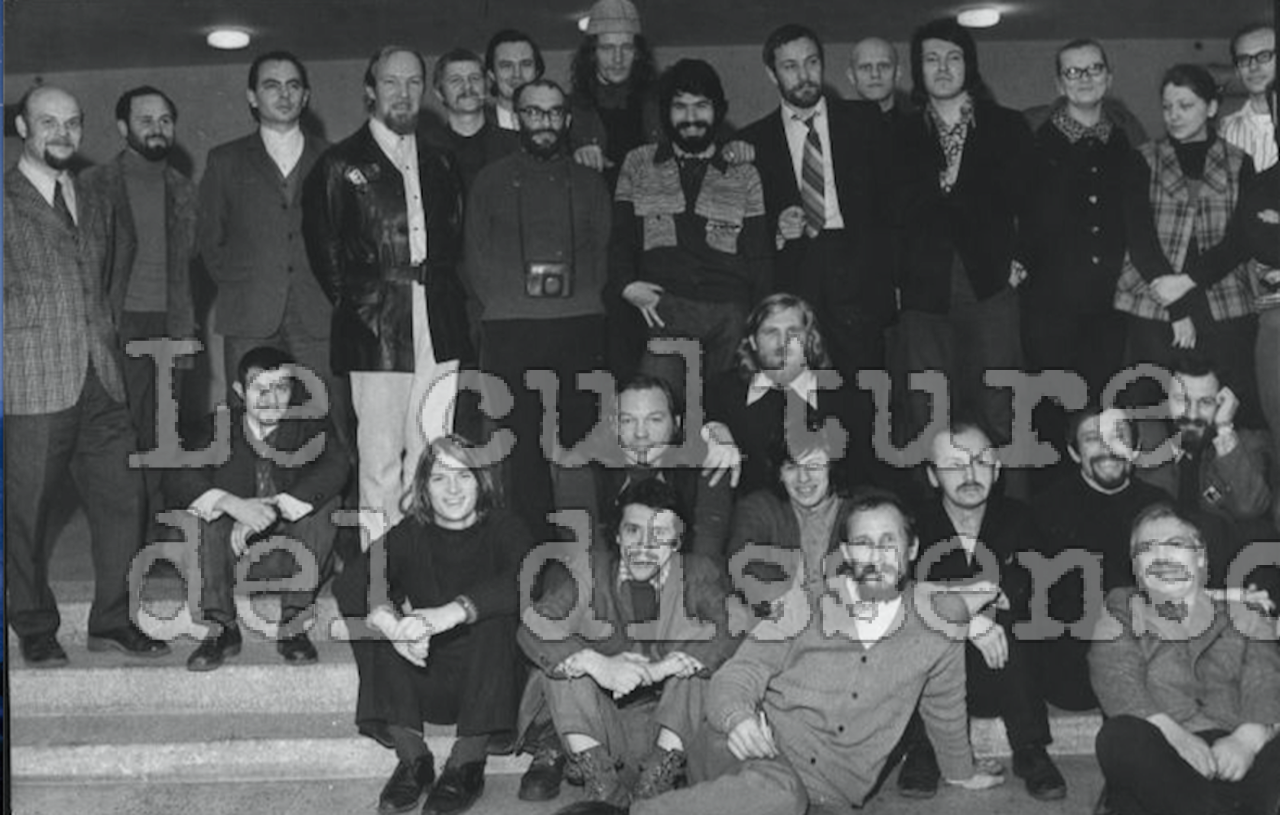
22 Jun [Leningrad] Dvorets kul’tury imeni I. I. Gaza
Dvorets kul’tury imeni I. I. Gaza (Gazanevshchina)
Date:
22-25 December 1974
Place:
Leningrad
Description:
In the context of the Leningrad unofficial movement of fine arts and literature, during the 1960s, before the famous nonconformist Gazanevsky events, there were several unofficial exhibitions, such as the one at the Ermitage State Museum on March 30-31, 1964, by Shemyakin group, or the exhibition at the Kozitsky Palace of Culture in 1968-1969 by the School of Sidlin. These small events testifie to the progressive activity and vitality of the non-conformist artists in Leningrad. In the late autumn of the 1974, under the direction of Youri Zharkikh unofficial artists requested the authorities to permit a public and official exhibition of their artworks. The Soviet authorities were forced to allow the exhibition threatened by a potential international scandal after “Bulldozer” Art Exhibition in Moscow, organized by Oscar Rabin, Youri Zharkikh and Alexander Gleser, on September 15, 1974. A difference between the two events must be emphasized: the “Bulldozer Exhibition” was prepared by Moscow and Leningrad Nonconformist artists in the urban forest of Belyayevo as a political act against the oppressive regime, rather than an artistic event; in Leningrad, there was the first legalized exhibtion of unofficial fine arts. As known, the Soviet art of the 60s and 70s lived isolated, and only the members of the “Union of the Soviet artists” were officially acknowledged at home and abroad. Artists who were not officially acknowledged were not able to sell, exhibit or exhist. By violating these rules, they could be banned, arrested and their artworks could be destroyed. This is the reason why in Leningrad unofficial artists, requested the authorities to permit the event; it was a political act, but at the same time they really wanted to organize a permitted art exhibition. The authorities, under pressure from abroad, allowed unofficial artists to hold this official exhibition. This historical event took place at the Gaza Palace of Culture of Leningrad on December 22-25, 1974. The complete list of the partecipants includes the following artists: A. Arefiev, V. Afanasiev, A. Basin, A. Belkin, V. Bogatyrev, G. Bogomolov, L. Bolmat, V. Viderman, Y. Vinkovetsky, V. Gavrilchik, Yu. Galetsky, A. Gennadiev, E. Goryunov, E. Gritsenko, F. Gumenyuk, I. Dakinevichujte, Yu. Dyshlenko, E. Esaulenko, Igor’ Ivanov, Ilya Ivanov, Y. Zharkikh, A. Isachev, T. Kerner, G. Zubkov, A. Kozhin, V. Kubasov, B. Kupin, G. Lakin, V. Leonov, N. Lyubushkin, T. Mamonova, A. Manusov, E. Zakharova, Y. Nikshyul, V. Mikhaylov, V. Ovchinnikov, A. Okun’, V. Permyakov, Yu Petrochenkov, A. Polushkin, A. Rapoport, I. Ross, V. Rokhlin, E. Rukhin, N. Sazhin, V. Sbitnev, I. Sinyavin, V. Smirnov, V. Solovyova, G. Ustyugov, V. Filimonov, V. Shagin.It was a very short event, that lasted four days. Showcasing their 220 works, these fifty-two non-confromists artists aroused an unpredictable interest by many people. Even though the authorities blocked all information, the exhibition was marked by 15000 visitors, detailed reports in samizdat and foreign press. This first authorized exhibition of non-conformist artists delivered a mighty explosion of the individual creativity and the emancipation from the socialist realism. Different styles were represented, such avant garde, primitivism, surrealism, pop-art. It also influenced Leningrad unofficial writers and poets to produce the anthology Lepta, a project of publication for Soviet editor Sovetky pisatel’. The idea of producing the anthology was inspired by the “official acknowledgement” and the success of the exhibition at the Gaza Palace of Culture. In 1975, the project of publication was rejected by the Union of Soviet Writers, however Gazanevshschina and Lepta became an crucial moment in the history of unofficial culture in Leningrad. The Gazanevsky culture recorded another success with the second exhibition of Nonconformists from Leningrad, which took place on September 1975 at the Nevskij culture palace, and it inspired new exhibitions and informal groups, such as the Fellowship of Experimental Fine Art (TEII). On the whole, Gazanevshchina, was able to change the course of Leningrad underground, and with its ironic name indicates one of the most independent phenomena in the artistic life of the 1970s and 1980s in Soviet Union.
Bibliography:
A. Basin, L. Skobkina (ed.), Gazanevshchina, Sankt-Peterburg, 2004, pp. 324.
M. Sabbatini, “Quel che si metteva in rima”. Cultura e poesia underground a Leningrado, Collana Europa Orientalis, Salerno 2008.
Samizdat Leningrada. 1950-1980-e: Literaturnaja enciklopediya, red. by D.Ja. Severyukhin, Moscow 2003, pp. 26-27.
[Marco Sabbatini]
[scheda aggiornata al 31 maggio 2019]





